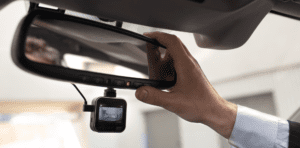Compare cheap car insurance
✔ Compare cheap car insurance quotes
✔ Over 110 insurance providers
✔ Get a quote in minutes
✔ Save up to £504*


The rising popularity of low emission cars among UK buyers comes as no surprise, given their environmentally friendly nature and cost-effective operation. Discover essential information about insuring these eco-friendly vehicles.
- What qualifies as a low emission car?
- Do low emissions affect my insurance?
- Can I get insurance for an electric car?
- Can I get hybrid car insurance?
- What level of insurance cover can I get for my low emission car?
- Compare low emission car insurance
- Frequently asked questions
What qualifies as a low emission car?
In the United Kingdom, a low emission vehicle (LEV) is defined by the UK Vehicle Certification Agency as one that emits less than 100g of CO2 per kilometre (0.6 miles) travelled.
This category includes two sub-groups: ultra-low emission cars (ULEVs) emitting less than 75g of CO2 per km, and zero-emission vehicles (ZEVs) producing no carbon emissions.
Low emission cars encompass a wide range of options, such as efficiently powered petrol engines, electric cars, and hybrid vehicles.


These eco-friendly alternatives have been gaining tremendous popularity in the UK due to the impending 2030 ban on the sale of new petrol and diesel cars, along with the implementation of low emission zones in select cities.
Read more about the ban on petrol and diesel cars by 2030 in the UK.
By opting for a low emission car, not only are you making a positive impact on the environment, but you’re also giving a boost to your bank balance. These vehicles tend to be more cost-effective to run compared to traditional petrol and diesel cars, making them a smart choice for both the planet and your wallet.
Embracing the transition to low emission vehicles is a step towards a greener and more sustainable future.
Read about the latest news on zero emission vehicles from the Office for Zero Emission Vehicles.
How much can you save on your car insurance?
Do low emissions affect my insurance?
Low emissions, on their own, do not directly impact your car insurance premiums. Your insurance costs are influenced by a combination of various factors, including the specific car you drive, your profession, driving history, and more.


The insurance industry categorises each vehicle model into insurance groups, ranging from 1 to 50. Cars placed in higher groups generally cost more to insure.
Car insurance groups take into consideration
- Repair Costs: The expenses involved in repairing the vehicle after an accident or damage.
- Repair Times: The time it takes for repairs to be completed.
- New Car Values: The current market value of the vehicle.
- Price of Parts: The cost of replacement parts for the car.
- Performance: Factors like power and acceleration of the vehicle.
- Safety Features: The presence of safety measures to protect passengers.
- Bumpers: How well the bumpers protect the car during impacts.
- Security Features: Anti-theft and security systems in the car.
If you’re looking to reduce your insurance costs, opting for a car in a lower insurance group could be a viable approach to lower your premium.
Examples of Cars with Low Emissions
Here’s a table showcasing a selection of cars with low emissions and their corresponding insurance groups:
| Car | Emissions (CO2g/km) | Insurance Group (1-50) |
|---|---|---|
| BMW X5 PHEV X5 xDrive5E | 39 | 46 |
| Hyundai Ioniq Hybrid Premium | 84 | 11 |
| Nissan Leaf eAcenta | 0 | 26 |
| Renault Zoe Iconic | 0 | 19 |
| SEAT Leon FR e-Hybrid | From 25 | 23 |
| Skoda Citigo SE Greentech | 96 | 1 |
| Suzuki Celerio SZ4 | 99 | 7 |
| Tesla Model S | 0 | 50 |
| Toyota Prius Hybrid T4 | 104 | 16 |
| Toyota Yaris Hybrid Icon | 92 | 13 |
By choosing cars with low emissions and lower insurance group ratings, you can contribute to a cleaner environment while potentially saving on your insurance premiums.
Remember that other factors will still play a role in determining the final cost of your insurance, so it’s essential to consider all aspects before making your decision.
How much can you save on your car insurance?
Can I get insurance for an electric car?
Yes, getting insurance for an electric car (EV) is readily available, as most car insurance providers offer cover for these eco-friendly vehicles.
When you seek insurance for your electric car, it’s essential to find a policy that covers specific aspects related to EV ownership. These typically include:
Accidental Damage: Protection against damages resulting from accidents or collisions.
Fire and Theft of Your Battery: Coverage for any fire-related incidents or theft of your EV’s battery.
Charging Cables and Wall Boxes: Insurance should encompass the charging equipment you use at home or public charging stations.
It’s worth noting that some car manufacturers provide an option to lease the battery, which can help lower the initial purchase price of your EV. If you decide to go with this battery lease option, it’s crucial to inform your insurance provider about it.
Leasing the battery might impact the cost of your insurance premium, so transparency about this arrangement will ensure your cover accurately reflects your vehicle’s unique features and configuration.


By choosing the appropriate insurance policy that caters to the specific needs of electric car owners, you can drive your EV with confidence, knowing you have adequate protection in case of any unfortunate incidents.
As electric cars become more prevalent and insurance providers adapt to these advancements in automotive technology, the process of insuring your eco-friendly ride has become more streamlined and accessible.
Embrace the future of sustainable transportation with the peace of mind that comes from comprehensive electric car insurance cover.
How much can you save on your electric car insurance?
Can I get hybrid car insurance?
Yes, you can get standard car insurance to cover your hybrid car without any issues.
In the past, insuring hybrid cars, much like electric cars, tended to be more expensive compared to standard petrol vehicles. This was primarily due to the higher cost of parts associated with hybrids and the scarcity of skilled repairers who could efficiently handle repairs for these unique vehicles.
Consequently, repairers often charged higher fees. However, with advancements in technology and increased adoption of hybrids, the cost difference has become less significant over time.
It’s worth noting that some of the most popular hybrid models, such as the Toyota Prius and Hyundai Ioniq, not only excel in terms of fuel efficiency but also receive high safety ratings.


These factors work in their favour, making them relatively cheap to insure compared to many petrol cars. As hybrid technology continues to mature, more insurance providers are becoming well-equipped to offer comprehensive and competitive cover for hybrid vehicles.
When seeking hybrid car insurance, it’s essential to compare car insurance quotes from various insurers with Comparoo to find the best cover and pricing that suits your needs and budget.
By doing so, you can safeguard your hybrid car with adequate protection and enjoy the benefits of its fuel efficiency and eco-friendliness without breaking the bank on insurance costs.
Embrace the hybrid revolution and drive with confidence, knowing you have the right insurance in place for your eco-conscious and cost-effective vehicle.
How much can you save on your hybrid car insurance?
What level of insurance cover can I get for my low emission car?
For your low emission car, you have access to the same levels of cover available for any other vehicle.
Third-Party Only
Third-party insurance cover is the most basic and meets the minimum legal requirement. It provides cover for damages caused to another person’s car or injuries sustained by others while you are driving. However, it does not allow you to claim for damages to your own car or injuries you might suffer.
Third-Party, Fire, and Theft
Third-party, fire and theft (TPFT) Building on the basic third-party insurance, this level of cover includes the same protection for third parties but also offers additional security for your own vehicle. It covers theft and damages caused by fire to your car, in addition to the basic third-party cover.
Comprehensive
As the highest level of cover, comprehensive car insurance offers comprehensive protection. It not only covers damages and injuries to third parties but also provides cover for you and your own car. This means that if your low emission car is damaged in an accident, whether it was your fault or not, you can make a claim for the repairs. It also includes protection against theft, fire, and other unexpected events that might occur.


When selecting the right level of cover for your low emission car, it’s essential to consider your individual needs and budget. Comprehensive insurance may offer the most comprehensive protection, but it could be costlier than the other options. However, it provides peace of mind and ensures you are well-covered in various situations.
To make an informed decision, compare the cover and costs of different insurance policies from reputable providers at Comparoo. Doing so lets you find the level of cover that best aligns with your requirements and ensures your low emission car remains protected on the road.
How much can you save on your car insurance?
Compare low emission car insurance
The good news is that numerous low emission vehicles fall within low insurance groups, potentially leading to more affordable car insurance premiums for you.
However, considering the multitude of factors influencing insurance costs, it’s wise to compare car insurance options to discover the perfect deal tailored to your needs.
By providing us with details about yourself and the car you wish to insure, we’ll handle the legwork, making the process hassle-free and efficient for you. Take advantage of our services to find and compare car insurance that aligns perfectly with your requirements and budget.
Frequently asked questions
Determining if your car is a low emission vehicle is straightforward. Utilise the Vehicle Certification Agency’s checker to access essential information such as your car’s CO2 emissions, fuel consumption, and tax band.
This tool will provide you with the necessary details to ascertain whether your vehicle qualifies as a low emission car.
In numerous instances, small-engine car insurance tends to be more affordable. Cars with larger engines typically possess greater power and acceleration capabilities, which increases the risk of accidents.
Conversely, small-engine cars are often classified in lower insurance groups, resulting in potentially cheaper car insurance premiums.
Nonetheless, it’s important to remember that the final cost of your car insurance is influenced by various factors, even if you choose a vehicle with a smaller engine.
Other elements such as your driving history, age, location, and cover preferences also play a significant role in determining the overall insurance costs.
Therefore, while opting for a small-engine car may help in reducing insurance expenses, it’s essential to consider all factors and compare quotes to find the best insurance plan that suits your specific needs and budget.
With comprehensive car insurance, your electric battery is usually covered in case of damage resulting from an accident.
However, it’s important to note that general wear and tear or issues with a faulty battery might not be covered under your car insurance. In such cases, your car warranty might come into play to cover these specific battery-related concerns.
It’s crucial to review your insurance policy and car warranty to understand the extent of cover for your electric battery, ensuring you have the appropriate protection for any potential scenarios.
Yes, if you add breakdown cover to your electric car insurance or purchase it as a separate policy, you will be covered in the event of a breakdown in your EV.
The breakdown cover options can vary depending on the policy you choose. Typically, these policies offer a range of services such as:
Roadside Assistance: Help will be provided if your electric vehicle breaks down on the roadside, and attempts will be made to fix the issue on the spot.
Nationwide Recovery: If the vehicle cannot be repaired at the roadside, it will be towed to a nearby garage or a location of your choice.
Home-Start: Assistance will be provided if your EV fails to start at your home address.
Onward Travel: In case your car cannot be repaired immediately, you may receive alternate transport or accommodation options to continue your journey.
European Recovery: If you plan to travel in Europe, some policies may extend cover to include European breakdown cover in European countries.
Adding breakdown cover to your electric vehicle insurance ensures that you are well-prepared for any unforeseen breakdown situations, offering peace of mind and prompt assistance whenever and wherever you might need it.
Yes, you have the option to include additional drivers on your low emission car insurance policy.
However, it’s important to note that the primary driver, the person who uses the car most frequently, must be accurately identified as such in the policy. The named drivers should not be listed as the main driver since the primary driver is the one who uses the vehicle most often.
By adding named drivers to your low emission car insurance policy, you can extend cover to other individuals who might need to drive the car occasionally, offering flexibility and convenience for your family members or friends when they share the driving responsibilities.










